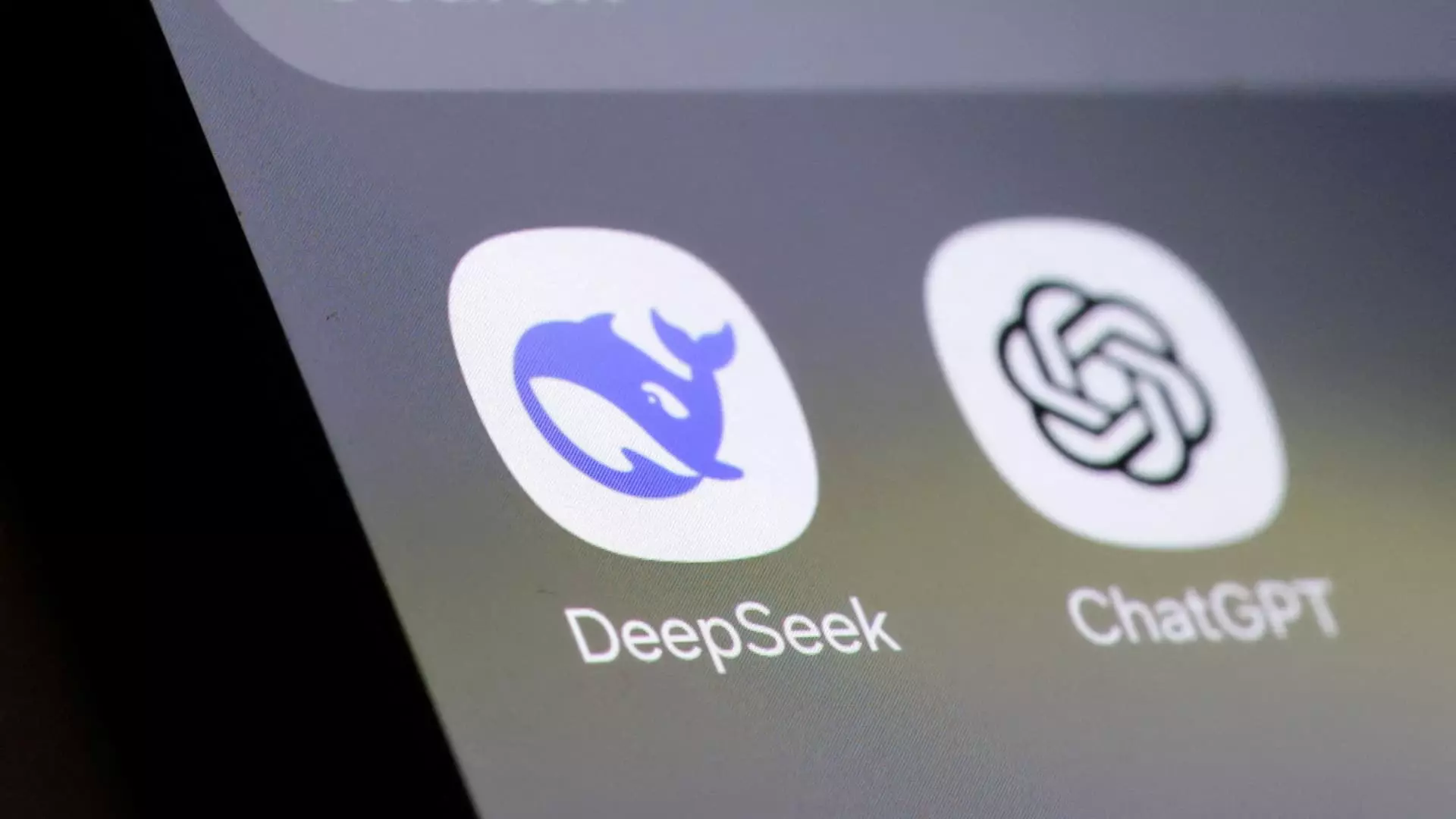In a rapidly evolving technological landscape, the emergence of DeepSeek’s artificial intelligence model marks a significant shift in how businesses across China are beginning to embrace AI functionalities. Originally launched in 2023, DeepSeek’s innovative R1 model has captivated companies by demonstrating not only robust reasoning capabilities but also a pricing strategy that outstrips its western counterparts, notably OpenAI’s ChatGPT. The surge in interest from a variety of sectors indicates a broader revolution in the use of AI within China, facilitated by increasing accessibility and affordability.
The speed at which Chinese enterprises are integrating DeepSeek is nothing short of remarkable. Major players in industries like automotive manufacturing, finance, telecommunications, and electronics have quickly gravitated towards DeepSeek’s offerings. As entities like BYD and state-owned telecom giants dive headfirst into this technology, analysts highlight a socio-economic ripple effect. Wei Sun, an analyst at Counterpoint Research, remarked on this phenomenon, suggesting that such widespread integration signifies a transformative impact on both society and economic structures in China.
The allure of DeepSeek extends beyond mere automation; it signifies a crucial educational leap for less urbanized regions that have historically been disconnected from advanced AI discussions. CEO Wenhao Zhang of Doodod insights into how the Lunar New Year holiday coincided with DeepSeek’s launch, encouraging dialogue about AI throughout the country. Consequently, the conversation surrounding AI has broadened from the tech-savvy metropolises to regions that previously lacked exposure.
One of the most compelling advantages of DeepSeek is its open-source model combined with substantially lower pricing. Unlike many proprietary systems, which are often encumbered by high costs and complicated usage conditions, DeepSeek offers a model that can be downloaded and tailored to specific business needs. This democratization of AI tools has cultivated a burgeoning ecosystem, enabling small and medium enterprises to harness the technology without extensive financial burdens. As James Tong of Movitech notes, implementing DeepSeek generated a remarkable 25% sales increase in just a few months; such a return on investment is enticing for any organization.
Moreover, the absence of ChatGPT in mainland China opens the door for DeepSeek to extend its influence. ChatGPT’s complications surrounding access—requiring foreign payment methods—have allowed a homegrown alternative to fill the gap, promoting a sense of autonomy in the Chinese tech landscape.
Beijing’s supportive stance toward AI deployment further benefits DeepSeek’s growth trajectory. The recent announcement by China’s national supercomputing network offers eligible companies three free months of access to DeepSeek and subsidized computing resources, akin to the U.S. government’s Stargate initiative. This fostered environment cultivates growth opportunities not only for established companies but also emerging startups dabbling in the AI sphere.
Chim Lee from the Economist Intelligence Unit emphasizes how DeepSeek’s competitive pricing is compelling other AI firms to reconsider their cost structures. With the growing trend of localizing AI applications—especially crucial for sensitive sectors like finance and healthcare—DeepSeek’s framework provides a sustainable route for organizations facing stringent regulatory landscapes.
While the initial interest in DeepSeek is undeniable, the broader question remains: how effectively can generative AI translate into tangible productivity gains? Some industry analysts posit that smaller entities may find greater advantages, particularly when integrating AI into hardware solutions. Conversely, larger firms focused on consumer services have yet to yield significant breakthroughs from their AI initiatives.
Mike Fang of Gartner cautions that while the declining costs of AI technology are promising, many small-to-medium businesses might still adopt a wait-and-see approach, hesitant due to the associated expenses of full deployments. However, forecasts from Gartner project a profound change: by 2029, a majority of Chinese entities could seamlessly integrate AI into their operational frameworks, dictating the landscape of revenue generation.
The momentum surrounding DeepSeek embodies a turning point in China’s AI narrative. As different sectors harness the model’s capabilities, the implications stretch far beyond operational efficiency; they pave the way for an entire ecosystem’s evolution. From educational empowerment in underrepresented areas to tangible economic benefits for businesses of all sizes, DeepSeek is rekindling excitement about the practical applications of AI. The coming years will be critical in determining how deeply this technology can embed itself in the fabric of Chinese industry, potentially redefining productivity standards as we know them.

